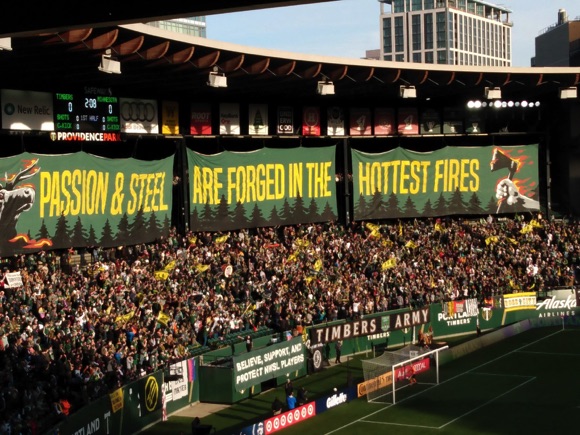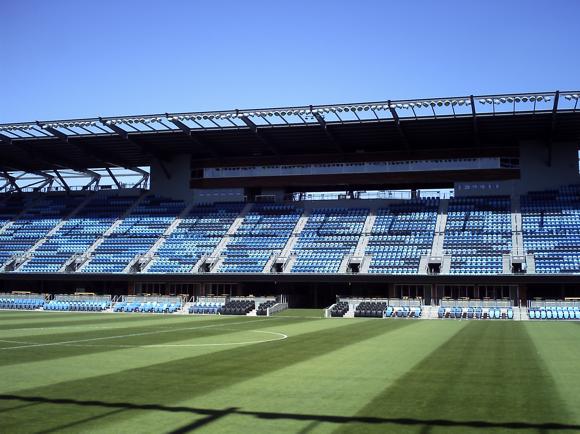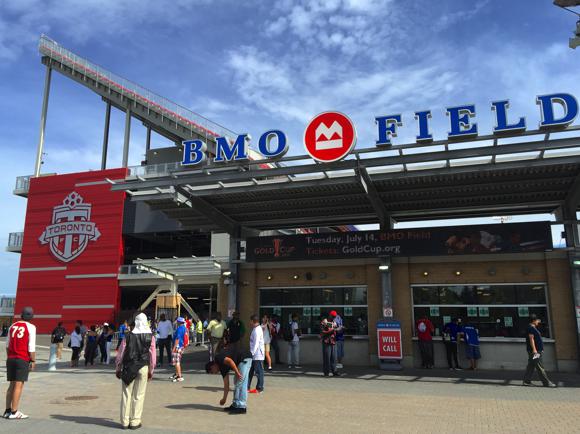A fan’s guide – the club from formation to today
An MLS expansion franchise arrival in 2019, Eastern Conference semifinalists in 2022, FC Cincinnati was built on the success of a previous, short-lived club of the same name. Until the opening of the soccer-specific TQL Stadium in the West End neighborhood in May 2021, both iterations of the Orange and Blue played at Nippert Stadium on the campus of the University of Cincinnati.
In many ways, FC Cincinnati was a soccer club waiting to happen. Steeped in local sporting history, Nippert Stadium dates back to World War I, honoring a college footballer who died from a mysterious injury sustained there in 1923. His grandfather donated the funds to elevate the location from a basic sports field to a stadium named after the tragic hero in 1924.
It was here that the Cincinnati Bengals played their first NFL season in 1968, around the time that local baseball team, the Cincinnati Reds, would soon dominate the MBL.
Owned by Nippert’s brother, Louis, who also had a stake in the Bengals, the Reds were later taken over by long-term benefactors of the university, which is where the Lindner family and soccer come into the story.
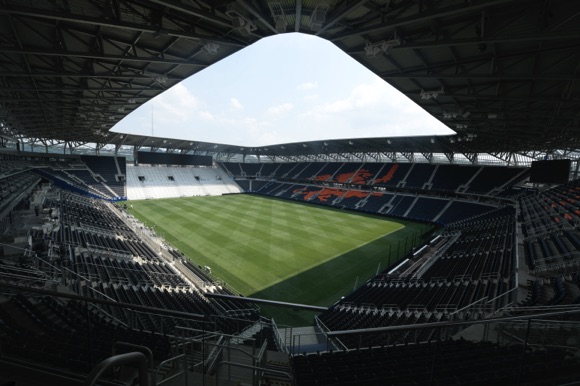


Making his considerable fortune in dairy and finance, Carl Lindner, Jr. was CEO and part-owner of the Reds in the early 2000s. When he died in 2011, his funeral procession set off from the Great American Ball Park on the banks of the Ohio river overlooking Kentucky, then wove its way past the landmarks of this bustling gateway to the Midwest.
Here, German settlers arrived in great numbers during the later 1800s, bringing their customs, beer culture but not soccer, a relatively late developer in Germany. Of the prominent teams in the American Soccer League of the 1920s, none hails from the Queen City.
It wasn’t until Neapolitan surgeon Nico Capurro came on the scene that soccer in Cincinnati started to happen. An influential figure in the city’s youth setup of the early 1970s, ‘Nick’ Capurro was yet another expat pioneer convinced that soccer would take off in America. He also convinced his associates to purchase the franchise being offered by the modestly successful ASL to join in 1972.

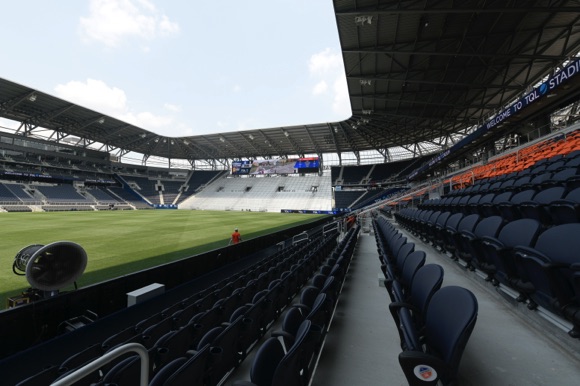
The city’s first professional soccer team, the Cincinnati Comets, first played at St. Xavier High School, against teams from Pittsburgh, Cleveland and Detroit. The Comets won its first Championship but lost in overtime the following year, on both occasions against teams from New York in the Final. Capurro was coach, while the star was a teenage sensation from Costa Rica, Ringo Cantillo, a student whom Capurro had found at open tryouts.
Cincinnati’s first soccer hero, he would go on to play alongside Rodney Marsh for Tampa Bay Rowdies in the NASL, and make several appearances for the United States Men’s National Team.
Following the title win of 1972, Cincinnati switched to the bigger Nippert Stadium but crowds remained low. Within a short time, the Comets had burned out in acrimony, unable to seal a deal to join the soon-to-boom NASL. By then, the ASL itself was in serious decline. Dr. Nick Capurro stayed in Cincinnati, and is today remembered for his major contribution to soccer development in the city – but also for his involvement in a scandal involving illegal prescriptions.
After a couple of short-lived attempts to sustain indoor soccer teams, the city’s next serious attempt to launch a professional operation came in 1997 with the Cincinnati Riverhawks, based out of town at Galbreath Field in Kings Mills, long since demolished. After several seasons, both the team and the A-League it competed in, folded.


Then came the Cincinnati Kings, which first played at modest Corcoran Field at Xavier University, then in Wilder, Kentucky, for eight indistinct seasons in the early 2000s. Though results were modest, as were attendances, Kings at least generated a local fan following, The Pride. Despite the club’s dissolution, behind the scenes, something would soon be stirring.
A former soccer player at St. Xavier High School a few years after the short-lived Comets phenomenon, Jeff Berding served on the board of the Cincinnati Bengals before being lured by the potential of soccer in 2015.
A member of Cincinnati City Council for 5 years, Berding knew the most influential figures in town and was wise to local sports lore. He was also on the board of Cincinnati Kings-Hammer FC, a youth soccer team whose roster included Berding’s own son.
With a franchise opening up in the USL, the de facto second tier of U.S. soccer, with growing ties to MLS, Berding teamed up with Carl Lindner III, son of the legendary Reds owner. Their aim was to establish professional soccer in the city for once and for all.


Even with the considerable backing of the Lindner empire, two other key elements were required: Improving facilities and increasing capacity at Nippert Stadium to 40,000, the new ownership also needed soccer expertise. They found it in John Harkes. A veteran of the English game and the early years of MLS, with 90 international caps for USMNT, the firebrand midfielder had been working in media when Berding approached him. Harkes was on board.
Settling on colors of orange and blue, and a lion crest – perhaps a nod to The Pride? – Berding and Lindner had the branding. Now they needed fans. Some were carried over from Cincinnati Kings, others had seen what real soccer culture looked like at nearby Columbus Crew. There was already a scene happening in Louisville, USL rivals-to-be 100 miles away down the I-71. Pittsburgh Riverhounds had its Steel Army.
After the big announcement in August 2015, supporters’ groups formed, some harking back to Cincinnati’s Germanic past. Die Innenstadt convened at the Rhinegeist brewery or Mecklenberg Biergarten, dating back to 1865. The Pride got the band back together. And then there was The Bailey. This raucous section of 1,700 fans beat their drums behind the north goal, alongside the Die Innenstadt, together taking up a third of one end.
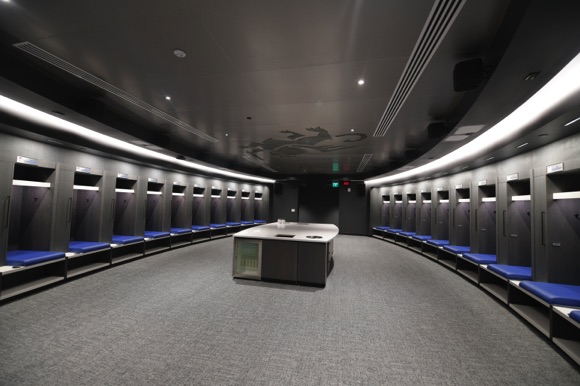
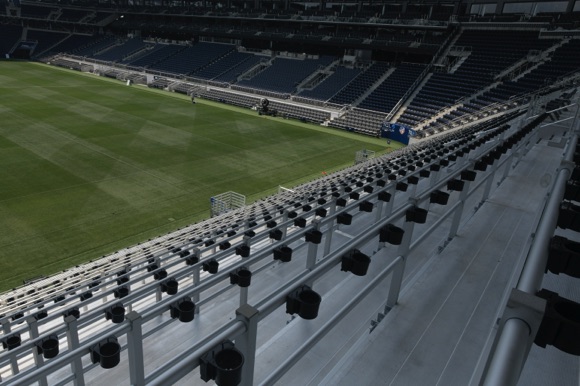
FCC soon began to break attendance records for USL, most notably for the clash with local rivals Pittsburgh Riverhounds in May 2016, then a year later against Orlando B. In between, a visit from English Premier League club Crystal Palace drew 35,061 to Nippert Stadium in July 2016. Despite the 0-2 defeat, the event was seen as a watershed in the soccer history of the city. If any team was ready for MLS, it was Cincinnati.
There was still time for FCC to put together a run to the semifinals of the U.S. Open Cup, a titanic battle with long-established MLS giants New York Red Bulls. In front of 33,000 at Nippert Stadium, the Orange and Blue went 2-0 up thanks to a second goal from local boy, Austin Berry. With the final 15 minutes away, Red Bulls then hit back with two goals in three minutes, the second a bullet header from Bradley Wright-Phillips. The former Southampton star then hit the bar two minutes from time, making sure in overtime with a winner for the visitors.
Winning their first USL Eastern Conference title in 2018, former Middlesbrough forward Emmanuel Ledesma unstoppable with 16 goals and assists, FCC bowed out to second-tier soccer in style.
Despite a string of losses, some by large margins, setting a negative record for goals conceded, Cincinnati embraced MLS in 2019, attracting an average gate of 27,507 at Nippert Stadium, third-best out of 24 teams.
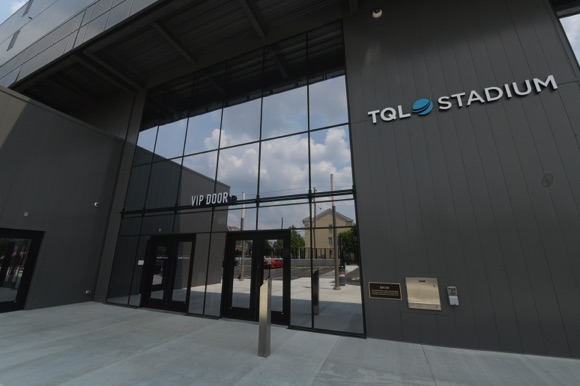
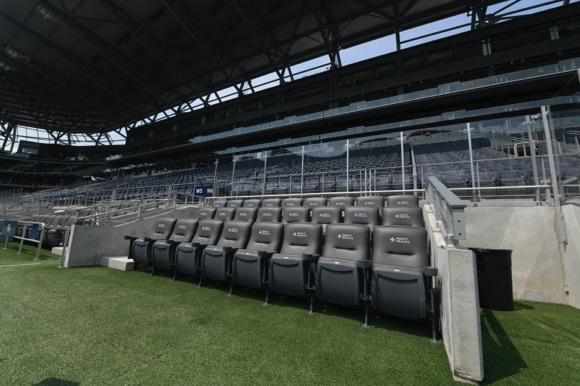
The following season, curtailed due to the pandemic, was little better under former Dutch World Cup star Jaap Stam. 2021 was, if anything, worse, although it did start with three games on the road as the last touches were being added to the soccer-specific West End Stadium, later named TQL after its sponsors, a freight logistics company.
The stadium opened in May 2021, close to the Ohio River, in the West End neighborhood alongside Over-the-Rhine, heart of the city’s traditional brewing industry. A German-style beer hall by the main entrance also harks back to Cincinnati’s past, while locally brewed Rhinegeist beer fuels the masses.
In November 2021, fans from across the States sampled the goods as TQL Stadium staged its first major international, USMNT’s vital World Cup qualifying game with Mexico. In an eerie repetition of a winning tradition borrowed from nearby Columbus, Cincinnati witnessed another dos a cero victory that pushed the U.S. towards Qatar before a full house.


Although another disappointing MLS season had long finished by then, FCC started 2022 on the front foot with a win over old rivals Pittsburgh Riverhounds in the U.S. Cup. After a terrible start, incoming coach Pat Noonan led Cincinnati to their first MLS Playoffs, an unbeaten run through August and September pushing the Orange and Blue past Miami and Orlando in the Eastern Conference.
Stellar performances from Brendan Vazquez earned the young forward an invitation to the MLS All-Star Game that August and a call-up to the USMNT squad in early 2023. His strike partner, the Brazilian Brenner, only 22, was equally prolific, hitting a hat-trick in the vital last game of the regular season at D.C. United.
A late goal from Vazquez edged out New York Red Bulls in the First Round of the Playoffs, but neither he, Brenner nor busy Argentine midfielder Luciano Acosta managed to break the Philadelphia defense in the next round.
A near perfect start to the 2023 campaign saw Noonan’s men atop the Eastern Conference, and gates of 25,000 once more at TQL Stadium.
Stadium Guide
The field of dreams – and the story behind it

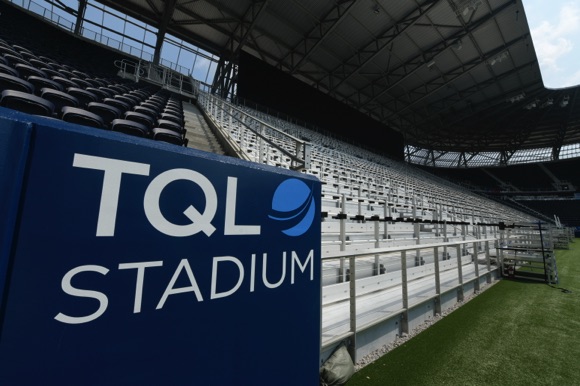



Opened in 2021, TQL Stadium provides the perfect example of a soccer-specific stadium in MLS. With a capacity of 26,000, safe-standing sections (104-110) for passionate Orange and Blue fans in The Bailey, and premium spaces such as the Pitch View Club for higher-paying visitors, the new home of FC Cincinnati has been developed to please user and sponsor alike.
Players, too – the stadium is open yet intimate, those 3,170 fans in the North End right over the pitch, at a 34-degree angle, the steepest permissible slope in MLS, sightlines preserved even when scarves are raised. The closest seats are 15 feet from the pitch, which consists of technologically advanced turf, facilitated by an AirPAT system for optimum moisture, ventilation and growth. The 360-degree canopy roof covers all spectators but allows maximum sunlight onto the field, while the video board is the largest in MLS for a soccer-specific stadium.
The setting, in the centrally located West End neighborhood, controversially razed and rebuilt from the 1960s onwards, is just across from the historic brewing quarter of Over-the-Rhine, reflected in the beer hall lining the east sideline.
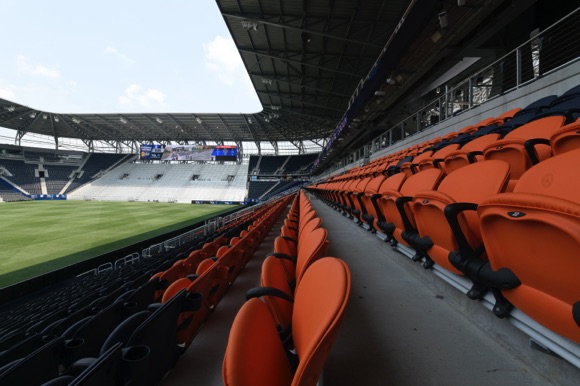
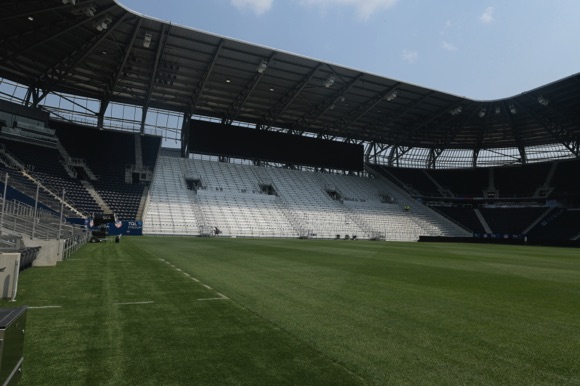



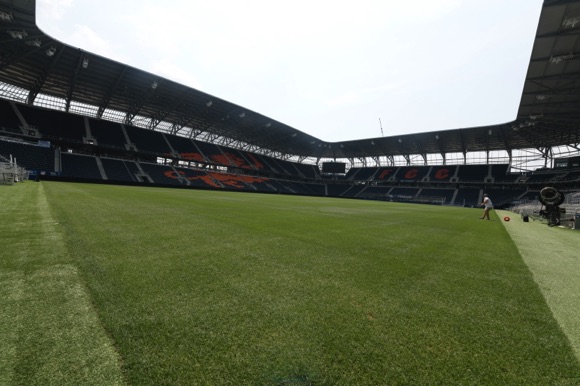
Siting the venue here was contentious, and required the demolition and rebuilding of Stargel Stadium which had only been renovated in 2015. Taft High School pupils now have football right on their doorstep after FCC paid $10 million for their sports ground to be relocated and rebuilt.
Benefits for soccer fans, 70% of whom enter via the communal East Plaza and up a grand staircase, include panoramic views of Cincinnati, right down Central Avenue. Those approaching the stadium will soon spot the hundreds of aluminum fins covering the façade like gills, illuminating in blue and orange on match nights. While there’s no tailgating, outlets around East Plaza open two hours before kickoff.
Away fans, allocated Sections 224-225 in the upper southeast corner, can look forward to a relatively easy journey in from the nearest airport a 30 to 40-minute drive or bus ride away.
Transportation
Going to the stadium – tips and timings

Cincinnati/Northern Kentucky Airport is 16 miles away at Covington in Kentucky. Every 30 minutes, a TANK 2X-Airporter bus heads to 5th at Elm from CVG Centre at the airport, taking 35-40 minutes, cash fare from the driver $1.50. The bus drops you downtown on Elm Street, under a mile from Washington Park a short walk from the stadium.
You can also walk three blocks to Fountain Square and take light-rail line 100 to 14th & Elm at Washington Park.
Coming back, bus 6 on the city’s same Go Metro network calls at Central Parkway & Ezzard Charles Drive, heading for the focal Government Square Area via 5th St & Vine St. Local services cost $2 through the Transit App or if you’re coming in from the airport, just pay the driver a $0.25 transfer supplement on top of the $1.50 fare.
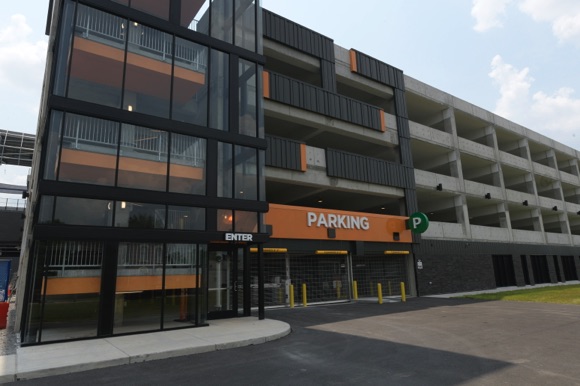
The city has a free streetcar service, The Cincinnati Bell Connector, which runs every 15mins up Main St and Elm St from The Banks by Great American Ballpark, calling at 14th & Elm at Washington Park near the stadium.
Local Moe’s Airport Taxi (513-332-2862) should charge around $35-$40 for the 30-minute journey from the airport to downtown or the stadium.
Nearby Over-the-Rhine has a number of parking surface lots, including at 1113 Elm Street, OH 45202 ($1/hr), close to Washington Park, and Washington Park itself through 3CDC (OH 45202, $5/2-3hrs) at Elm St across from Music Hall and Race St/13th St.
The parking garages at the stadium are for season passholders only. The club also lists other matchday parking options, though special event rates may apply.
Ticketing
When, where, how, and how much
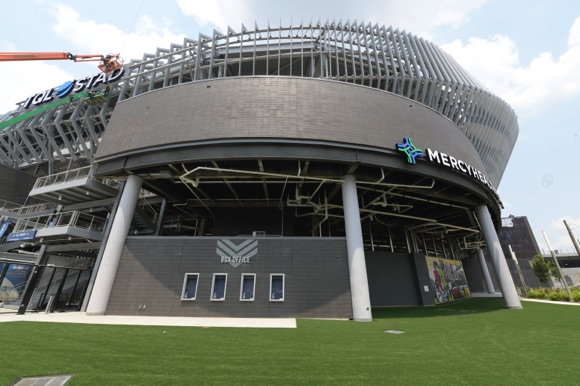
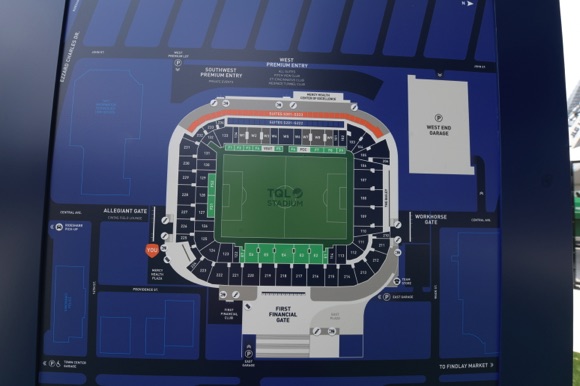
FCC operates mobile ticketing only. Tickets are available online for home games through the season and for FCC games on the road. You’ll pay $25 for standing room only in The Bailey, $30 for a seat alongside in Section 105, $35 for Section 223 in the opposite south corner, and $45-$50 in section 216, in the upper tier over the halfway line along the east sideline.
It’s around $100 to be close to the action in Row 1, Section 122, and $130 to sit in the Cincinnatus Club, with its great view and easy bar access.
Most matches are played close to capacity, but there should be a few places available online on the day.
For information, contact tickets@fccincinnati.com or call 513-977-5435.
merchandise
Jerseys, souvenirs, and all kinds of gear
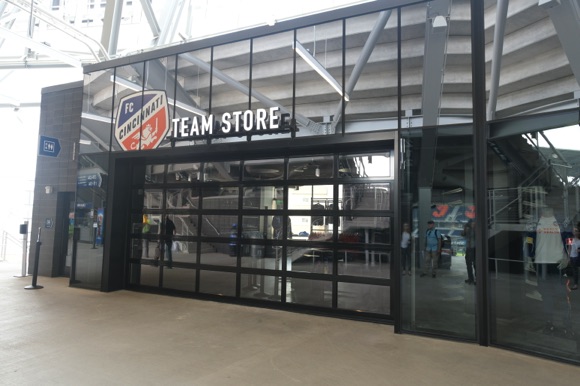

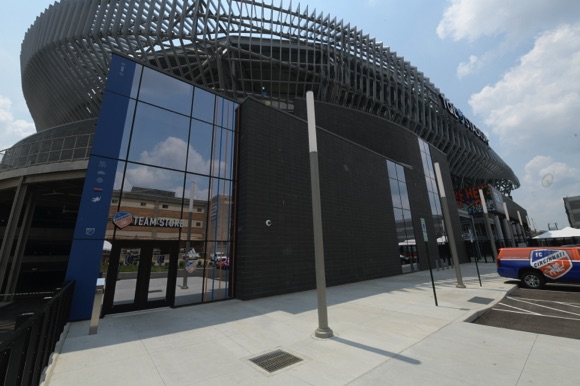

FC Cincinnati Team Store (Mon-Fri noon-6pm, Sat 10am-5pm, Sun noon-5pm, matchday 10am-1hr before gates open) in the northeast corner of TQL Stadium by Wade Street complements other matchday outlets found at concourse level behind Sections 105, 111, 126, and 132.
Primary jerseys feature dark blue shades with orange trim – the water effect inspired by the Ohio River, the Cincinnati wording on the back of the neck by the city’s bridges – while secondary jerseys come in orange with blue trim.
Accessories are pretty much limited to scarves and baseball caps, though the For Cincy For Club range of T-shirts and hoodies display some pretty nifty designs.
Where to Drink
Matchday beers at the stadium and downtown
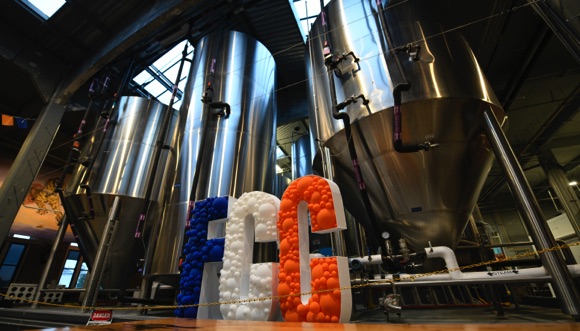

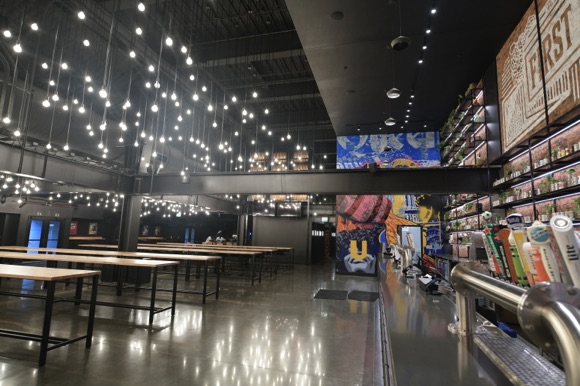


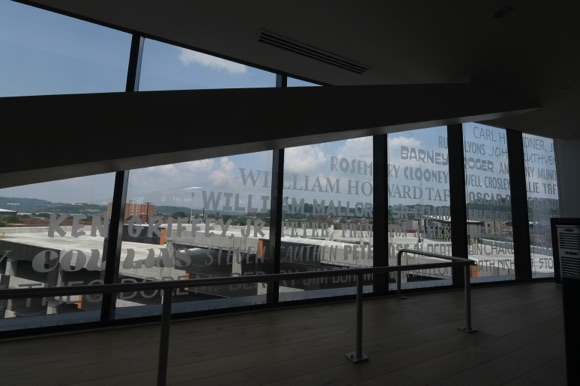
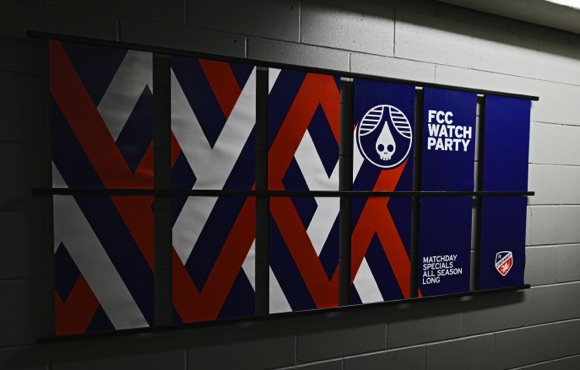



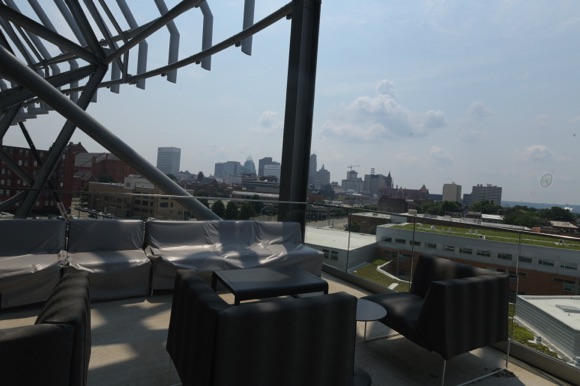

The city’s Germanic brewing heritage is best reflected in the drinking outlets around TQL Stadium, where local craft Rhinegeist is the beer of choice. As well as its self-named outlet in Section 131 (look out for the somewhat disconcerting skull logo), Rhinegeist is sold around East Plaza, the fan zone that operates from two hours before kickoff, and at First Financial Club, the huge two-floor, bare-brick bar that runs the length of the east sideline.
While interesting design-wise, inspired by the labyrinthine beer cellars that run beneath Cincinnati, FFC is only entry-level hospitality at TQL Stadium. Business clients are schmoozed overlooking the action from KMK Law Terrace while the Legends Room themes a suite around famous local personalities, most notably Rosemary Clooney, George’s aunt.

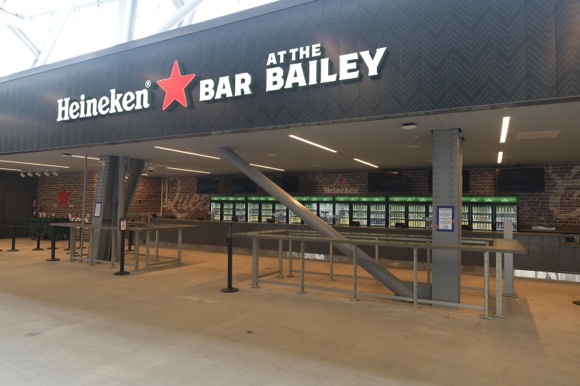



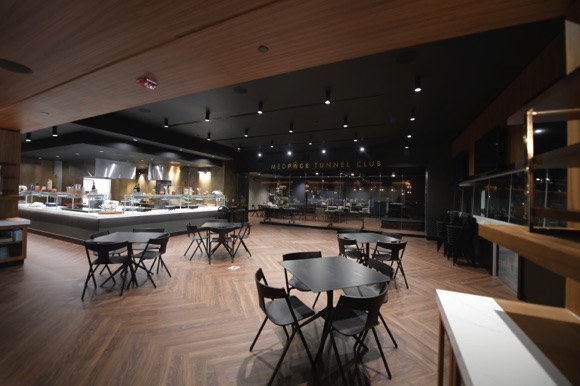

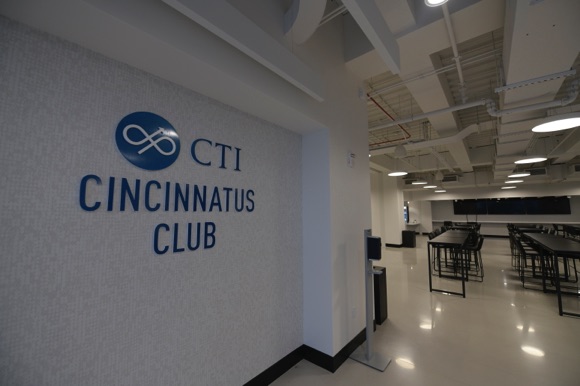
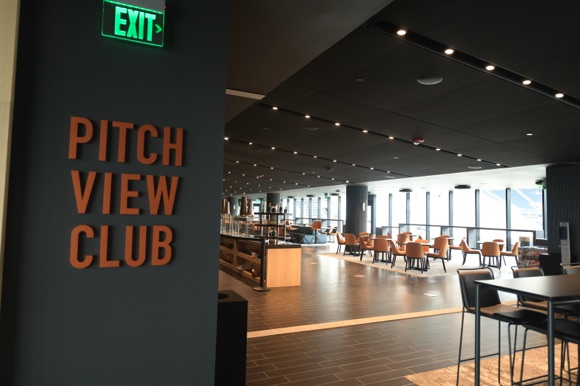


Pitch View Club, connected with Cincinnatus Club, provides the panoramic sightlines promised in the name, while the top-of-the-range, all-inclusive Tunnel Club, done out in the teak tones of Cincinnati Music Hall, gives exclusive access to high-paying guests who follow behind the players as they take the pitch, before finding their seats around the team bench.
Hardcore supporters in The Bailey sink Heinekens at their own bar in Section 108. Those alongside in Section 111 can make use of the Coors Light Bar there.
For something less sponsored and corporate, yet still exclusive in terms of view, The Pitch Cincy across Central Parkway from the stadium looks over TQL Stadium from its rooftop. The outdoor patio also catches the sun while the sports bar interior features a huge video wall. English Premier League action can be followed early morning on Saturdays, Sundays and Mondays.



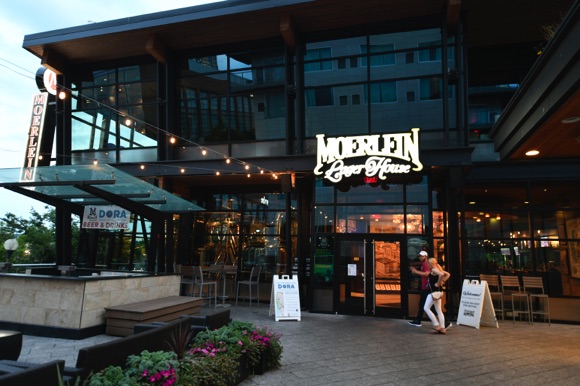

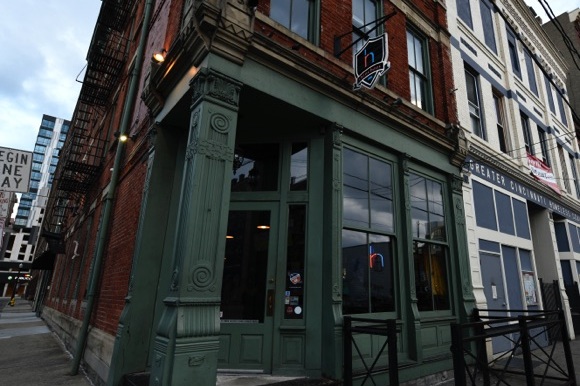

A couple of blocks nearer town on Race Street, Taft’s Ale House is the main outlet for this local brew, set in a former church dating back to the 1800s.
There are more beers to be found at rhinehaus, just the other side of Washington Park on E 12th St, the former Rhino’s reconfigured as Cincinnati’s first soccer bar. Fourteen screens can be tuned into different matches while the pub’s previous iteration lives on in the Haus Shots, particularly the ever-popular Mexican Rhino of El Jimador Blanco tequila, Rose’s lime juice and a dash of hot sauce.
Downtown on 7th St W, Knockback Nat’s is more in the classic American sports bar genre, all Reds and wings, while Moerlein Lager House stands right beside Great American Ball Park, a living testament to the Christian Moerlein Brewing Company of 1853 vintage when it set up in Over-the-Rhine. The beer was revived in 1981, then brewed decades later in many forms at this award-winning riverside spot. The menu takes its lead from the beer gardens of 19th-century Cincinnati.
timeline
Following the local soccer scene



1972 Cincinnati Comets founded. Win ASL.
1975 Cincinnati Comets folds
1978-79 Cincinnati Kids plays in Major Indoor Soccer League.
1997 Cincinnati Riverhawks founded. Plays USL A-League games at Galbreath Field in Kings Mills.
2003 Cincinnati Riverhawks folds.
2005 Cincinnati Kings founded. Plays professional soccer in fourth-tier USL Premier Development League in Wilder, Kentucky. Indoor team founded in 2008. Generates a local fan following, The Pride. Folds in 2012.
2015 Former city councillor Jeff Berding persuades fellow Cincinnati Bengals executive and prominent local businessman Carl Lindner III to assist in bringing high-level professional soccer to the Queen City.



2016 FC Cincinnati founded. Plays in USL, one tier down from MLS. Attracts record USL attendances at Nippert Stadium. A crowd of 35,061 watches FFC exhibition match with Crystal Palace.
2018 FC Cincinnati wins USL.
2019 FC Cincinnati joins MLS. Club plans new stadium in West End.
2021 TQL Stadium opens. Hosts vital World Cup qualifier between USMNT and Mexico, another dos a cero victory for U.S..
2023 FC Cincinnati tops Eastern Conference.








